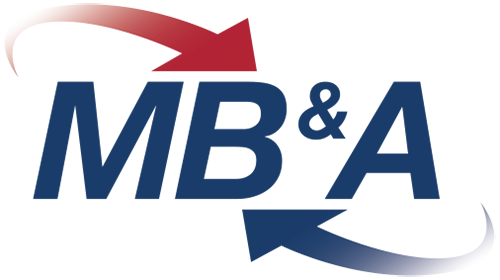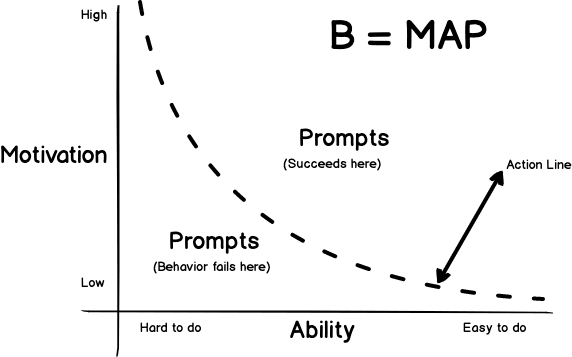Fogg Behavioral Model
Over the last few weeks the country as a whole has engaged in a series of experiments at different speeds and under different circumstances with regard to how they re-open their economies. The early results have been mixed at best and my personal experiences make me concerned that we may not be positioning ourselves for the best possible chance at opening and staying open.
For my family the first meaningful post lockdown steps have included outdoor eating and a couple of trips to the beach to visit family. On the whole we’ve tried pretty hard to manage our own lockdown in a manner that enables us to feel capable of visiting family by being transparent about the precautions we are taking within our family and having a clear agreement (without judgement) that if for some reason you cannot follow basic precautions either because of work, beliefs or otherwise that we will need to wait a bit longer before we can get together.
At home in Arlington, VA we as a family have tried to be exceptionally cautious and we’ve been fortunate to be able to depend on the small army of people now engaged in the business of transporting the things we need to us instead of going out to get it. This has meant lots of delivery for everything from food to basketballs to technology.
In recent weeks as we’ve progressed through phases and have gained new insights into how the virus spreads it has also meant some forays into the public in ways we believe are lower risk. We have a place we go to eat outdoors, the tables are a bit too far apart (10-12) to socialize with other patrons but even the small sense of normalcy that comes with being in the extended company of others has been enjoyable. The staff is masked and gloved, tables are wiped down immediately following seatings and chairs are then leaned agains the tables so it is easy to distinguish what has been cleaned from what has not been.
That level of proactivity has given us the confidence to return many times in the last few weeks and I think it is exactly the type of behavior that will not only help prevent the spread of the virus, but that will allow the economy to stay open. Simply put…we go because it is clear that the venue has put in place appropriate precautions and is doing all it can to maintain safety. Not every place I’ve been too has been so diligent.
Here in Arlington, Va I’ve had a few pickup experiences where masks get pulled over faces when I enter the store and customers are clustered despite having dots on the floor in order to queue customers to space by standing on them. On a recent beach trip I was surprised to see mask use by employees in food places at about ~50% in many establishments. This is in a state (NJ) where the virus has taken an awful toll statewide albeit not in this little beach town.
Some of this may be age related. I hesitate to stereotype but the vast majority of the people with noses exposed or without masks altogether appear to be in the under 30 age category. This group is also associated with some of the best outcomes from encounters with the virus. However, I would guess the folks that own these restaurants, shops and stores are a bit older and the overall demographics of this area skew quite a bit older. In short the chance for spread and bad outcomes seems high while the behaviors required to significantly reduce the probability of these bad outcomes (at least as propagated by the CDC and others) seem well within the reach of most of these shops.
For example the guidance on mask wearing has been pretty clear and so for the purposes of this example I am going to primarily focus on this specific behavior. In the case of NJ the governor of the state has issued an executive order requiring mask wearing within these businesses. So why aren’t they being worn? BJ Fogg says “Behavior (B) happens when Motivation (M), Ability (A), and a Prompt (P) come together at the same moment.” In this case the behavior we are looking for is the mask wearing. Fogg suggests when troubleshooting a behavior we should look first at issues with the Ability (Can you do it) or Prompt (Reminder to do it), before we look at Motivation (Desire to do it). While it is hard to characterize an aspect of the model that has numerous books written on it in a single sentence, I like to think of this as it being easier to make something easy to do and designing a system to remind you to do it than it is to make you simply want to do it more.
Returning to our friends at the beach, I’m sure very few of them are actively looking to get their parents, grandparents, or friends sick. So I think simply providing masks in the workplace would be an excellent first step for management to take, if this isn’t already in place. Judging by the wide variety of masks and coverings that were in use at some of the venues we passed, I’m guessing that some of these businesses are relying on staff to supply their own. This makes it harder (ability) to maintain compliance and doesn’t account for things like forgetting… something I’m personally quite good at.
Once we’ve lowered the bar on the ability to wear a mask, the next step is to establish a prompt. In this case, the prompt can be arriving at work to a managerial reminder that everyone don a mask at the beginning of each shift, supplemented by prominent signage. Research has confirmed that these types of prompt have been successful in encouraging hand washing in restaurants, not to mention they are affordable to implement.
The final step is to foster motivation to secure a benefit (e.g., putting a big gold star in the store window to show the team has passed a check). This has the dual benefit of avoiding punitive measures while reinforcing good behavior. Having someone passing by and dropping a sticker with the manager that can be placed in a window provides positive feedback and also serves as an enticement to customers that can easily see that a business is doing its part.
Software solutions, like ExAM4Inspections.com, can also play an important role. It could enable easy checks on businesses and by businesses to support compliance, transparency, and the public interest.
We all have a role to play in re-opening the economy and keeping it open. Simple behaviors on a small scale are going to have a huge impact on how successful we are as a collective. That’s why designing systems that ease and prompt appropriate behaviors are critical factors in how successful we are at the state, local, and national level in eradicating COVID-19.
To learn more about how our technology may be able to help your business, local, state, or federal organization drive the right behaviors, please click here. We want to help you solve this problem so we can all get back to and stay in business.





